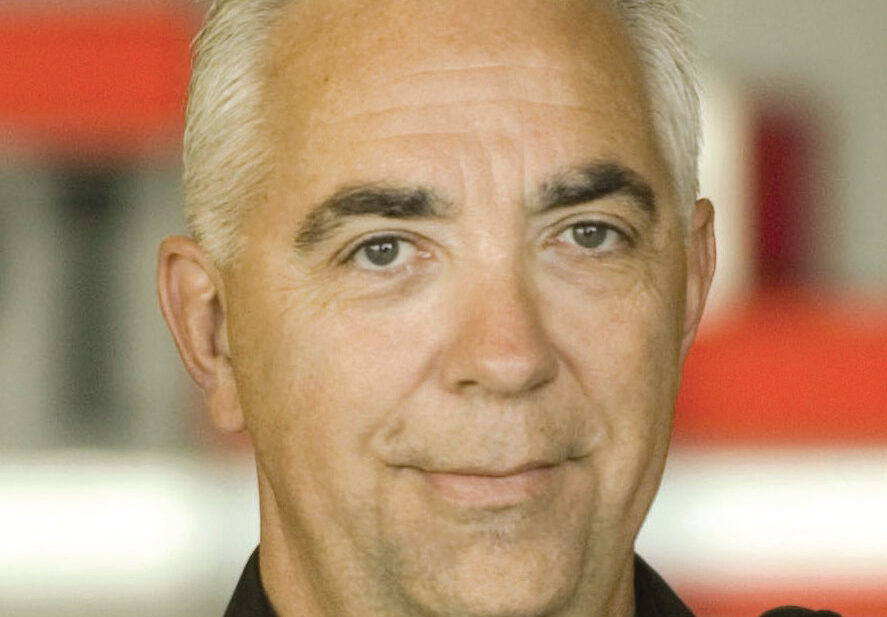
Stop Bad: Call Signs for Life
By Gord Schreiner
Features Training Week canadian firefighter fire chief firefighter training firefighters training Photo credit: Gord Schreiner
Photo credit: Gord Schreiner Of all the articles I have written, “Call Signs for Life” has gotten the most direct interest with dozens of departments reaching out to me to learn more about this very simple but effective system.
We all know the fire service is constantly changing. Forty years ago we had no portable radios. When we sent a team into a burning structure, we could not contact them other than by yelling to them. Today we would not think of sending a team into a burning structure without a portable radio. Today’s modern fire services has portable radios for every member of the team. Teams may have two to four portable radios, depending on their size. This change alone suggests that we should use a call sign system that allows us (if needed) to talk to the individual members of that team. Consider what happens when one member of your team gets separated from the rest of the team. How do we call that one member? Yes, we could call them by name, which should work, however we could have more than one firefighter with the same name. Or, in the case of a mutual aid firefighter, not know how to pronounce the name. Also, once we use the real name the confidentiality is gone. If that firefighter is lost or trapped and we use the real name on the radio, it is likely that many others outside of your department will know right away via scanners.
Some departments use their engine company assignments as their call sign when operating on the fireground. So Engine #1 remains Engine #1 when they are doing an interior attack or search. In this example, if we needed two teams (assuming a four-person engine company), from Engine #1 we would further split them into Engine #1 Alpha and Engine #1 Bravo (or something like this). This again does not give us individual call signs and does not take advantage of having more than one radio on that team. If one member from Engine #1 Alpha get separated from the others, it becomes very difficult to communicate with that one member without using real names.
Some departments use task-orientated call signs. An interior attack team would likely be called “Attack 1” and an interior search team would be called “Search 1” and so on. Again, this does not take advantage of more than one radio on that team. Also, using these types of systems can lead to many other problems. Using tasks as call signs, a firefighter might have his call sign changed several times during the same incident and will likely have a different call sign at his next incident. The firefighter needs to remember what his latest call sign was and try to not respond to a call sign that the firefighter may have used at a previous incident or earlier at the same incident.
Now, how about a call sign system where you are assigned a call sign when you join the department and use the same one for your entire career? The same call sign at every incident doing any task is much safer and more effective. We don’t change the names of our rigs when they are assigned to a different task, so we should do the same for our teams. Firefighters and incident commanders have enough to think about without having to remember or create a different call sign for every task they do, or when they ride on a different engine.
Call signs for life works extremely well. If firefighters are working on tasks like traffic, their individual call sign would be used. When they are working in teams, the team leader’s call sign is used to contact the team. After calling a team lead and getting no response, the IC can always try another member on that team. If a member of the team gets separated, that firefighter can contact command using their individual call sign. The system is simple and works great. It makes sense and it is safer and more effective. No, you don’t need to remember everyone’s call sign, just your own. Passport tags include the firefighter’s name and their call sign number. Firefighters love this system as it makes their jobs easier and safer.
In our case, we have displayed the individual call signs on everyone’s personal protective equipment, kind of like putting numbers on your rigs for easier identification. Individual call signs are on helmet patches, decals on the rear of helmets and velcro on the jackets and pants. We can see your call sign, you can see your call sign. You never forget your call sign!
Call signs for life can make your fireground safer and more effective, and it allows command to think more about strategy and tactics rather than what calls signs to assign in-coming teams. What will be your call sign at the next incident you attend? If you are using call signs for life, you would know right now!
Gord Schreiner joined the fire service in 1975 and is a full-time fire chief in Comox, B.C., where he also manages the Comox Fire Training Centre. He has delivered countless presentations in fire stations all over Canada and is available to assist your department in many areas. Contact Gord at firehall@comox.ca.
Print this page
- Psychological PPE: Mental performance coaching
- Recipe Rescue: Becoming the best firehouse chef you can be